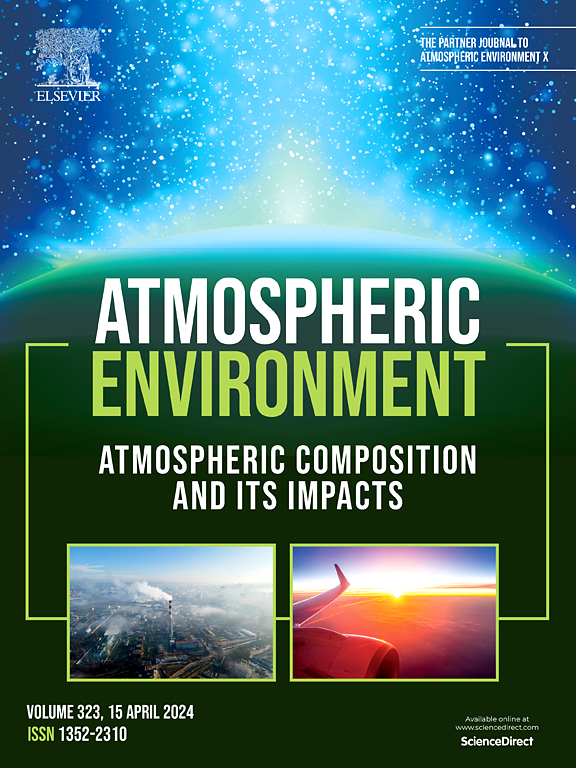HONO chemistry affected by relative humidity and ammonia in the North China Plain during winter
IF 4.2
2区 环境科学与生态学
Q2 ENVIRONMENTAL SCIENCES
引用次数: 0
Abstract
Nitrous acid (HONO) is a critical precursor of the hydroxyl radical (OH) and plays a pivotal role in atmospheric photochemistry. Although nitrogen dioxide (NO2) heterogeneous reactions (HET) on ground and aerosol surfaces are widely recognized as major paths of HONO production, their influencing factors are not well characterized in air quality models, limiting the understanding of HONO formation and the quantification of their regional impact. In this study, a novel parameterization scheme for the NO2 uptake coefficient, including the effects of solar radiation, relative humidity (RH) and ammonia (NH3), was developed and coupled into the Weather Research and Forecasting model with Chemistry. Nine simulation scenarios were designed to assess the impacts of RH and NH3 on HONO chemistry and O3 levels in the North China Plain (NCP). The results showed that the RH-impacted HET contributed 10−25% of HONO, with a significant increase of more than 35% during the haze periods; whereas the NH3-impacted HET contributed 15% of nighttime HONO and <5% of noontime HONO, playing a more significant role in rural areas. Vertically, the RH-impacted HET contribution to nighttime HONO concentrations remained 26−31% at an altitude of 700–900 m due to the higher RH levels (50−60%) during the haze periods; whereas the NH3-impacted HET contribution was minor above 500 m owing to the fast-decreasing NH3 concentrations with height. When RH exceeded the turning point (70%), nighttime HONO was suppressed by up to 1 ppb in eastern NCP. The combination of RH and NH3 produced a ground daily maximum 8h averaged O3 enhancement of 6–14 μg m−3 during the haze periods, exceeding the effect of solar radiation. These findings deepen our understanding of the role of RH and NH3 in HONO chemistry and imply the importance of reasonably expressing HET in air quality models.

求助全文
约1分钟内获得全文
求助全文
来源期刊

Atmospheric Environment
环境科学-环境科学
CiteScore
9.40
自引率
8.00%
发文量
458
审稿时长
53 days
期刊介绍:
Atmospheric Environment has an open access mirror journal Atmospheric Environment: X, sharing the same aims and scope, editorial team, submission system and rigorous peer review.
Atmospheric Environment is the international journal for scientists in different disciplines related to atmospheric composition and its impacts. The journal publishes scientific articles with atmospheric relevance of emissions and depositions of gaseous and particulate compounds, chemical processes and physical effects in the atmosphere, as well as impacts of the changing atmospheric composition on human health, air quality, climate change, and ecosystems.
 求助内容:
求助内容: 应助结果提醒方式:
应助结果提醒方式:


